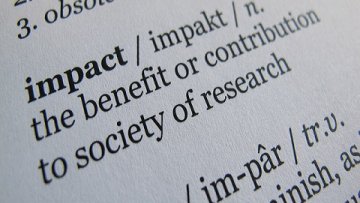Regenerative Medicine from an Engineer's Perspective
Abstract
Regenerative medicine offers great hope in curing many currently untreatable diseases. Tissue engineering and stem cell therapy are the two main components of regenerative medicine. In this talk, I will discuss how engineering can make contributions to this highly interdisciplinary field, including biomaterials as 3D scaffolds, bioreactor design, and stem cell bioprocessing.
15:00
Hash Proof Systems over Lattices Revisited
Abstract
Hash Proof Systems or Smooth Projective Hash Functions (SPHFs) are a
form of implicit arguments introduced by Cramer and Shoup at
Eurocrypt’02. They have found many applications since then, in
particular for authenticated key exchange or honest-verifier
zero-knowledge proofs. While they are relatively well understood in
group settings, they seem painful to construct directly in the lattice
setting.
Only one construction of an SPHF over lattices has been proposed, by
Katz and Vaikuntanathan at Asiacrypt’09. But this construction has an
important drawback: it only works for an ad-hoc language of ciphertexts.
Concretely, the corresponding decryption procedure needs to be tweaked,
now requiring q many trapdoor inversion attempts, where q is the modulus
of the underlying Learning With Error (LWE) problem.
Using harmonic analysis, we explain the source of this limitation, and
propose a way around it. We show how to construct SPHFs for standard
languages of LWE ciphertexts, and explicit our construction over a
tag-CCA2 encryption scheme à la Micciancio-Peikert (Eurocrypt’12).
If there is enough time, we will conclude with applications of these
SPHFs to password-authenticated key exchange, honest-verifier
zero-knowledge and a variant of witness encryption.
14:30
Increasing Sequences of Integer Triples
Abstract
We will consider the following deceptively simple question, formulated recently by Po Shen Loh who connected it to an open problem in Ramsey Theory. Define the '2-less than' relation on the set of triples of integers by saying that a triple x is 2-less than a triple y if x is less than y in at least two coordinates. What is the maximal length of a sequence of triples taking values in {1,...,n} which is totally ordered by the '2-less than' relation?
In his paper, Loh uses the triangle removal lemma to improve slightly on the trivial upper bound of n^2, and conjectures that the truth should be of order n^(3/2). The gap between these bounds has proved to be surprisingly resistant. We shall discuss joint work with Tim Gowers, giving some developments towards this conjecture and a wide array of natural extensions of the problem. Many of these extensions remain open.
14:15
Ice sheet runoff and Dansgaard-Oeschger cycles
Abstract
Many northern hemisphere climate records show a series of rapid climate changes - Dansgaard-Oesgher (D-O) cycles - that recurred on centennial to millennial timescales throughout most of the last glacial period. They consist of sudden warming jumps of order 10°C, followed generally by a slow cooling lasting a few centuries, and then a rapid temperature drop into a cold period of similar length. Most explanations for D-O events call on changes in the strength of the Atlantic meridional overturning circulation (AMOC), but the mechanism for triggering and pacing such changes is uncertain. Changes in freshwater delivery to the ocean are assumed to be important.
Here, we investigate whether the proposed AMOC changes could have occurred as part of a natural relaxation oscillation, in which runoff from the northern hemisphere ice sheets varies in response to each warming and cooling event, and in turn provides the freshwater delivery that controls the ocean circulation. In this mechanism the changes are buffered and paced by slow changes in salnity of the Arctic ocean. We construct a simple model to investigate whether the timescales and magnitudes make this a viable mechanism.
14:15
Moffatt eddies in valleys beneath ice sheets
Abstract
Radar data from both Greenland and Antarctica show folds and other disruptions to the stratigraphy of the deep ice. The mechanisms by which stratigraphy deforms are related to the interplay between ice flow and topography. Here we show that when ice flows across valleys or overdeepenings, viscous overturnings called Moffatt eddies can develop. At the base of a subglacial valley, the shear on the valley walls is transfered through the ice, forcing the ice to overturn. To understand the formation of these eddies, we numerically solve the non-Newtonian Stokes equations with a Glen's law rheology to determine the critical valley angle for the eddies to form. The decrease in ice viscosity with shear enhances shear localization and, therefore, Moffatt eddies form in smaller valley angles (steeper slopes) than in a fluid that does not localize shear, such as a Newtonian fluid. When temperature is incorporated into the ice rheology, the warmer basal ice is less viscous and eddies form in larger valley angles (shallower slopes) than in isothermal ice. We apply our simulations to the Gamburtsev Subglacial Mountains and solve for the ice flow over radar-determined topography. These simulations show Moffatt eddies on the order of 100 meters tall in the deep subglacial valleys.


